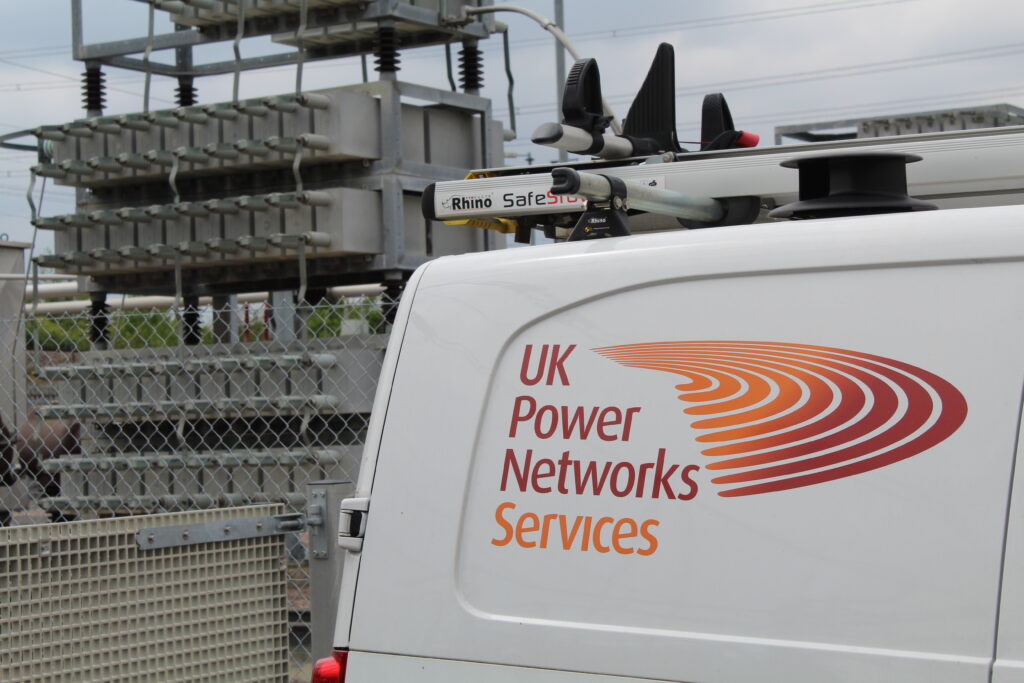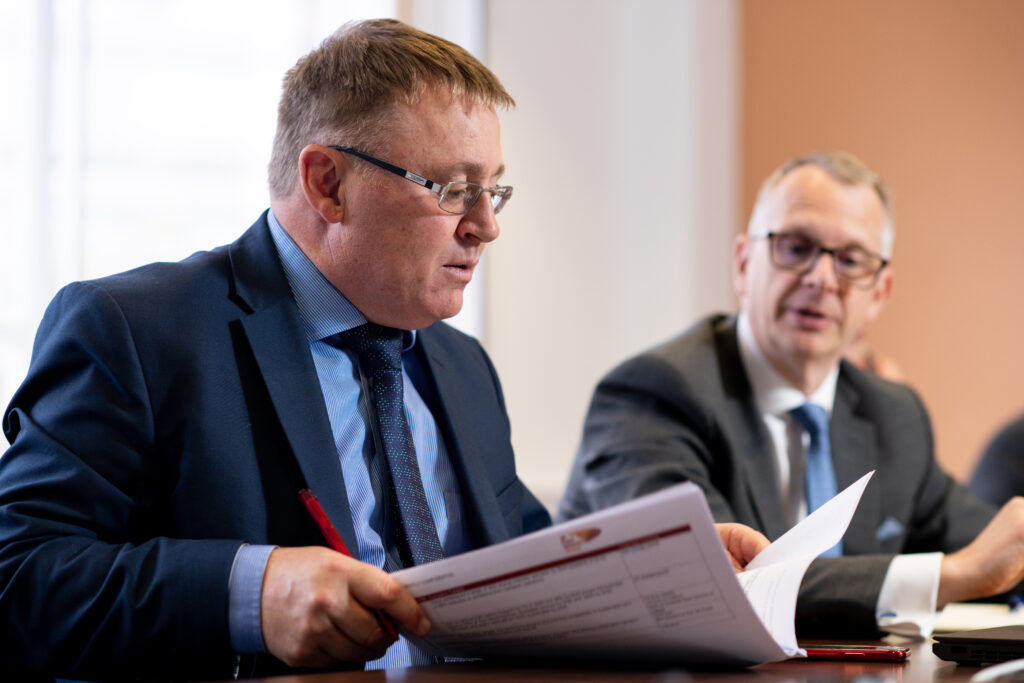Energy resilience, sustainability, decarbonisation, and affordability are critical concerns for the rail industry and electricity network operator, UK Power Networks Services, is leading the charge to find solutions. Rail Engineer spoke to Director David Mitchell and Head of Markets Phil Heathcote, to find out more.
Can you give us a brief overview of UK Power Networks and the work your team does in the rail industry?
Phil Heathcote: UK Power Networks Services is a business-to-business organisation which operates across the UK. Initially we were concentrated in the South and East, but we’ve now opened up dedicated offices in western England and most recently a Northern office in Salford Greater Manchester.
David Mitchell: We’re active in all parts of electrification of rail, from traditional third rail, AC catenary rail, four rail DC systems, including light rail and trams where we’re working on projects in both Croydon and Manchester. Until recently, we worked on the Lewisham branch of the Docklands Light Railway (DLR), for which we designed, financed, and built the power system. Other interesting projects include work on the on the Thameslink and we’re also looking at light rail concepts for battery trains. We take projects all the way through the stages from feasibility, design, and build, so our clients get a product which tackles their project as a whole solution.

A recent major project has been the Great Western Electrification Programme (GWEP), which we undertook along with ABB. Our work on GWEP allowed us to showcase our focus on innovation, which was realised through the implementation of ground-breaking initiatives including the Rationalised Autotransformer System (RATS). This is a state-of-the-art advanced digital protection system, which reduces the number of circuit breakers and other equipment whilst maintaining safe operation of the line.
You’ve also been heavily involved in High Speed 1. Could you tell us a little more about that?
David: We have a long-standing strategic relationship with High Speed 1 (HS1) and this year marks the 20th anniversary of our completing the first section of the line. We designed, built, and financed that part of the project and continue with its operation. The reliability we have achieved on HS1 is outstanding, I believe it is the most reliable railway in Europe.
One of the exciting things about HS1 is that it’s a green form of transportation. We’re working hard to try and keep energy costs down and have looked at several initiatives. Recently, we introduced regenerative braking which is proving very successful. We’re also assisting with solar PV connections and helping HS1 to decarbonise its estate and work towards a complete carbon-free journey.
We’ve had a very constructive 20 years with HS1. We’ve learned many lessons and we’ve taken that knowledge with us to other projects.
Can you tell us about any other projects you’re currently working on, or any more that are in the pipeline?
David: We’ve recently won a contract to upgrade the power supply for the Piccadilly line. That’s currently at the design stage. In simple terms it is upgrading the power system to allow more spacious modernised trains to be introduced with sufficient capacity to run a more frequent timetable. The work we have been awarded includes upgrading some of the bulk supply points where power is taken from the grid, transformed, and then distributed at 22kV around the railway.
The work at the DC traction sites will involve putting new substations in and upgrading the capacity of existing equipment for example rectifiers. That will be a challenging project as the London Underground is always a very congested place to work. We also have the problem that now, with the night trains, engineering hours for changeovers are shorter. However, we have years of experience and the team knows what they’re doing.
We’re currently also replacing the SCADA system on HS1, as it has come to the end of its life. This involves replacing the control systems. We’re also taking the opportunity to bring in online monitoring of the 400KV transformer bushings so that we can monitor them in real time. Again, in a live system, making sure all of that is brought into play has plenty of challenges.
Sustainability and carbon reduction are both critical concerns for today’s rail industry. Can you give us an insight into your work in
this area?
Phil: We’re looking closely at door-to-door, low-carbon journeys, and rail is a key part of that. We’ve done a lot of studies for various TOCs and ROSCOs, talking about battery operated rolling stock and charging infrastructure. There’s obviously a lot of interest now because the industry is trying to work out how you can decarbonise rail without spending millions per kilometre. The work we’ve done with TOCs has proven that batteries are a viable, cost-effective concept.
Fundamentally, we’re looking at EMUs with batteries fitted. The batteries are charged while the rolling stock has either got the shoe down or the pan up and are sufficiently charged to go off along a non-electrified route. This supports discontinuous electrification schemes, of which we have quite a lot in the UK, where there can be a gap of a couple of kilometres between electrified segments.
We consider the whole journey. Stations are key nodes in the rail network, with car parks where you can place Electric Vehicle (EV) charging points. We did some work for Northumberland County Council where we took one of their car parks, and installed EV charging points along with solar canopies and battery storage. Passengers could then theoretically drive to the station by EV, charge their car while they travel by rail, then jump back into in their EV at the end of the day. That concept can be applied just as easily to any car park at any other station, and the studies we’ve done for TOCs show that it is viable and achievable.

The world’s going electric. We’re moving from hydrocarbons to electricity. Rail is key to that, and we need to see more electrification. This is true across all transport types. Of course, people are looking at hydrogen too, and it has its place in the mix.
David: That said, we have worked on some projects linked to hydrogen. You need electricity to produce hydrogen, a lot of electricity, and we’ve worked on some schemes which are trying to bring hydrogen production closer to the consumer – even to the forecourt. Wherever there’s a green energy source, and electricity is involved, we’re usually involved.
Sustainability and decarbonisation will only be achieved if organisations take a whole-system approach. How then, can the rail industry make its projects more sustainable?
David: We’ve won a few awards for our sustainable approach. On the GWEP we used polyfibre-reinforced concrete in place of traditional steel reinforcement for construction of load bearing concrete structures. The fibre was added to the concrete at source, so it wasn’t necessary to construct the steel frames on site. The environmental benefits included a 42-tonne reduction of reinforcing steel going to site, and the reduction of embodied carbon by 18,000kg CO2 equivalent.
The initiative won Network Rail’s Sustainable Construction Award and was shortlisted for the Environment and Sustainability categories at the Utility Week Awards 2017 and UK Rail Infrastructure Awards 2018, two categories at the Rail Partnership Awards 2018 as well as the Health and Safety Initiative category in the Network Awards 2020.
On other projects were looking to use more prefabricated articles. By bringing prefabricated articles to site, we’re realising a number of eco-friendly benefits including reduced lorry journeys. Knowing where the finished product comes from, knowing how it has been produced, and looking at the whole life cycle of the product, makes project completion much more sustainable.
Phil: The other point I’d make, which also drives carbon efficiencies, is application of Building Information Modelling (BIM) and the creation of digital twins. Modularisation is important, but design is the first step, and creating a digital twin where you can see the interfaces and connections of the design is crucial.
How successfully is the rail industry coming together to enact real change in terms of sustainability?
David: Collaborating with other companies is a key factor. By working together organisations can achieve the most productive means of completing a project at a lower cost, and in a more sustainable manner.
Phil: Rail gets a lot of flak in the press, but it’s done a lot of really good things. The encouragement of collaborative working and the way Network Rail has structured these collaborations deserves real credit.
It’s like synchronised swimming. You all need to work as a team to save time, money, and carbon, particularly in rail where possessions are time limited. You must be collaborative in your outlook as an organisation, and work with others not just because it’s contracted but because it’s the right thing to do. Working in rail has helped drive that mindset at UK Power Networks Services and we’re looking to incorporate it into other sectors.
www.ukpowernetworksservices.co.uk/contact
Image credit: UK Power Networks Services

